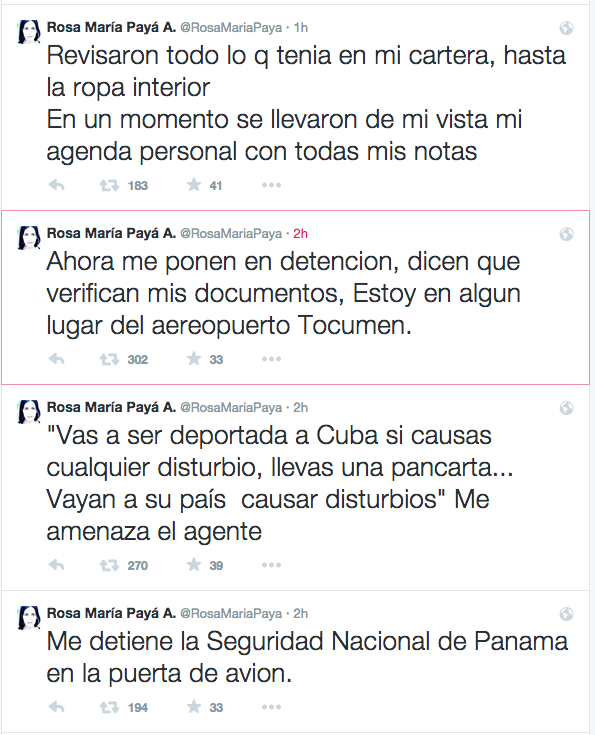Many thanks to whomever subtitled this video so that we can bring you one of the greatest groups from Cuba today. Your Friendly Site Manager
Category: AUTHORS
Adventures and misfortunes of a correspondent in Cuba / 14ymedio, Yoani Sanchez
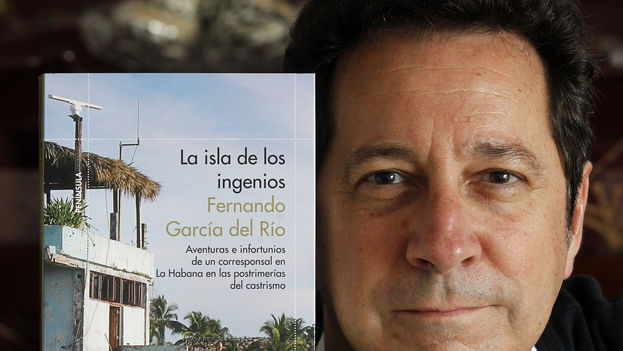
14ymedio, Yoani Sanchez, 6 April 2015 — Fernando Garcia del Rio was a correspondent in Cuba for the Spanish newspaper La Vanguardia (Barcelona), from 2007 until his expulsion from Cuba in 2011. He has just published a book,“The Island of the Mills,” where he relates the “adventures and misfortunes of a correspondent in Havana in the final years of the Castro regime.” From Madrid, where he still works for La Vanguardia, the author has responded by email to questions from 14ymedio.
Question. Why did they expel you?
Response. It is obvious that my work did not please the authorities. They did not specify the reasons in detail. One day in March 2011, when I was about to complete four years as a correspondent, an official from the International Press Center (CPI) called me to a meeting the following Saturday morning. For more than a year that organization had let me waiting for the renewal of my accreditation, an essential document to be able to work on the island. I’d also spent some months without receiving any calls or communication from the CPI. And this, as a member of that body explained to me with obvious cynicism, meant that I was in a phase that implied, among other things, “the silence of the mails.” continue reading
The fact is, that at the final meeting at the Center’s site on the Rampa, the official in charge of communicating to me the outcome of the process sat across from me and limited himself to reading what he had brought written on a piece of paper. It was Article 46 of the CPI rules, according to which the entity can withdraw a correspondent’s accreditation when it considers that there has been a lack of ethics or objectivity, or actions “inappropriate” to the mission. I asked how and in what reports had I incurred these suspicions. The official, instead of answering me, unfolded the paper again and repeated to me the contents of the article in question. He did answer my question regarding if there was a timeframe for me to leave, “As soon as possible, as soon as you organize the move and sell your car,” he said.
“I’ve often wondered which article or articles could have bothered them so much. The one I devoted to the significant drop in the rates of Communist Party memberships?”
In the book I tell the story in detail, but not without noting that the CPI expelled a ton of journalists in similar circumstances. So the event was nothing extraordinary, although telling the story is still illustrative. I’ve often wondered which article or articles could have bothered them so much. The one I devoted to the significant drop in the rates of Communist Party memberships, and how much this fall worried its leadership. Or maybe it was the report about the terribly poor sugar harvests of 2010 and 2011, titled, “Cuba’s bitter sugar”?
Question: It has been four years since your expulsion. Does Cuba remain in your dreams and nightmares?
Answer: Of course it continues in my thoughts and in my memory. Predominantly fond memories. Cuba is a unique and unforgettable country. For starters, coming from outside can feel like a time machine. Or like being in a period film – back to the fifties – where contemporary elements seem like mistakes in the props. That feeds the reverie. Beyond this imaginary sensation there is maybe something superficial, I see Cuba as a country with people hungry for the future who improvise the present minute-by-minute within a system anchored by the past. A broken country, in a material and figurative sense, as so many of its buildings and its streets are broken, but also its economy, communication with the exterior, and the families who remain separated by a stretch of ocean. But Cubans masterfully use an infallible weapon against the breakdown of hope, which is resourcefulness.
The [Spanish] Real Academia dictionary gives this term three principal meanings, as well as one relative to sugar factories. Ingenuity is the “ability of man to devise or invent quickly and easily”; it is also “industry, cunning and artifice of someone to get what they want,” and at the same time, “the spark or talent to rapidly see and display the funny side of things.” I believe that it is thanks to ingenuity, in its different forms, that most Cubans continue to get ahead. With ingenuity to fix the broken and fill the vacuum; to stop and confuse the adversary with humor and constructive spirit. Hence the title of the book, clearly.
Question: How difficult was it to practice journalism onThe Island of the Ingenuous?
Answer: What can I tell you about that?! Of course, the difficulties aren’t the same for a foreign correspondent in Havana – at the end of the day, a kind of passage through the country with someone having your back – than for a Cuban journalist who puts it all on the line. So, I send my respect and sincere admiration to my colleagues on the Island who, against all odds, try to do real journalism inside the country. That said, in my case as a correspondent, the main and most obvious difficulty was maintaining an acceptable balance between a commitment to the readers for the truth and the desire to keep one’s position; that is, to relate events without hiding the essential data but without getting the country’s authorities all stirred up.
“As a correspondent, the main and most obvious difficulty was maintaining an acceptable balance between a commitment to the readers for the truth and the desire to keep one’s position”
On the other hand, in Cuba informative material is peculiar. More than news, what you find are propaganda and rumors. But beyond what circulates in the media and is put at your disposal, the field is enormous. Regardless of the political decisions, the relevant announcements and the more or less substantial official discourse, Cuba seemed to me from the beginning a country that deserves to be told. Because, given that everyone has to invent a life for themselves every morning, things are constantly happening to all Cubans.
So the stories are endless, and almost always interesting because they speak of the daily bread. It’s not about “objective conditions,” figures on the “blockade” or other aspects of the everlasting conflict with the enemy; it’s about raw reality, which is what should come first to us journalists. Reality with a face and eyes, although at times you have to hide identities to avoid problems with the staff. And if, in addition to this reality, you tell it gracefully… Finally, sometimes the system serves you gems, involuntarily, real jewels for the daily chronicle. I’m referring to the reports that Granma or Juventud Rebelde publish from time to time, intending to counter something or meant as a warning, but that for the foreign media are like diamonds in the rough.
I remember discovering an “urbanization” of 350 houses made with railroad rails and sleepers in a coastal neighborhood called La Panchita. The residents, beset by the severe housing shortage suffered by the entire Island, pulled up 15 miles of railroad track to get the construction materials they needed to build their homes. The government published this finding with great scandal and indignation and with the announcement of disciplinary measures. They had to show that in Cuba people are made to pay for their crimes. Meanwhile, what this gave me was excellent raw material for an article on the housing shortage, and the theft of materials as a recourse to alleviate basic needs.
Question: Ingenuity, creativity, “resolve”, “under the table”, “invent” … many different ways of calling the juggling of survival we have to perform every day. Did some of them have a lasting impact on you?
Answer: In my book I dedicate a chapter to the “resurrection of scrap.” Here I report my discovery of what Cubans think is a total classic. I’m referring to the use of the Russian Aurika 70 washing machine for purposes that have nothing to do with the original. I discovered it in a casa particular [private B&B] in Viñales. The owner – his wife told us – couldn’t come out to greet us because he was enjoying a “hydromassage session.”
We went through to look at the courtyard of the house and the guy had his hand in the washing machine. He explained how this had been prescribed by his doctor: he should put his hand in there for 20 minutes a day, I think on the prewash setting, for his injured wrist. Then the man showed us the fan he’d hooked up with the motor from the drier. Later I learned that this was a more or less usual practice, with this and other appliances distributed by the State, and that, being so widespread, it had even set off a national debate about the supposed energy waste.
“The architects of Old Havana say the ruined or semi-ruined buildings still standing in defiance of the laws of physics are ‘in miraculous static.’ The image is useful to describe the lives of most Cubans”
They told me that the Aurika was also a stupendous tomato crusher. I learned of the electric teakettle converted into a shower heater, the rikimbili (a bicycle converted into a motorcycle), and I don’t know how many more inventions. But it not only made me admire the ability of Cubans when it comes to making utensils from almost any object; as much or more I admired your infinite capacity to fabricate metaphors. It sticks with me, the expression created by the architects of Old Havana to classify ruined or semi-ruined buildings that are still standing, year after year, in apparent defiance of the laws of physics: they are building, they say, “in miraculous static.” In addition to being a poetic and humorous definition, the image is useful to describe the lives of most Cubans. In any event, it’s great.
Question: Last December 17th the restoration of relations between Cuba and the United States was announced. Was this something predictable in the years you lived in Havana?
Answer: No, I didn’t imagine it. Some American officials and academics with good connections to the White House pointed out, then, that Obama could take important steps to approach Havana in his second term, that is, now. But neither I nor the European journalists and diplomats whom I know thought there would be such a warm agreement after 54 years of rupture. I suppose that the process towards full normalization will be slow and not free of surprises. Hopefully, those interested in stopping it will fail this time.
The Cuban regime classifies the opponents are “mercenaries” / 14ymedio
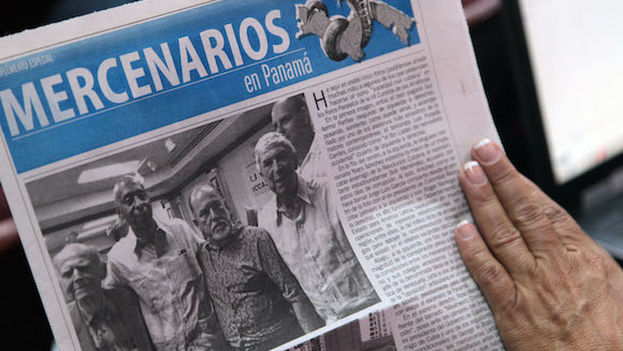
![]() 14ymedio, Havana, 7 April 2015 – The official Cuban civil society delegation that will participate throughout the week of parallel forums at the Summit of the Americas in Panama denounced, this Tuesday, the presence of “mercenaries in the service of a foreign power” in the meeting.
14ymedio, Havana, 7 April 2015 – The official Cuban civil society delegation that will participate throughout the week of parallel forums at the Summit of the Americas in Panama denounced, this Tuesday, the presence of “mercenaries in the service of a foreign power” in the meeting.
In a press conference, organized at the University of Panama shortly after the arrival from Havana and transmitted in full by the Island’s television monopoly, the members of the official Cuban delegation attacked the Cuban dissidents and independent activists who will also attend the meetings. In addition, the Union of Cuban Journalists distributed a pamphlet titled “Mercenaries,” in which they accuse the opposition leaders of a orchestrating a provocation on Panamanian soil. In the cover image, the deceased Huber Matos appears, along with others. In the press conference, only a few questions from the journalists present were allowed.
Liaena Hernández Martínez, a member of the National Committee of the Federation of Cuban Women, read a statement titled “It is inadmissible that mercenaries paid by enemies of the Island are in Panama,” where “the presence in these mercenary spaces [parallel forums] are paid for by the historical enemies of our nation. ”
A representative of the delegation said “there will definitely be no dialogue with those people,” accused of being part of a “meager ‘opposition’ fabricated from abroad, lacking any legitimacy and propriety.” The regime’s representatives didn’t even hesitate to link some members of civil society with “known terrorists that have caused infinite pain to the Cuban people.”
The Enslavement of Cuban Professionals / Angel Santiesteban
What value is there in loudly bragging about Cuba as a “medical world power” and that it “disinterestedly” sends thousands of doctors around the planet, when in reality the Cuban archipelago, for many years, has been far from this false image as an island paradise, from the moment when the Castro brothers calculated the numbers and dividends from the hugely lucrative business represented by selling the cheap slave labor of these professionals.
Thanks to these medical brigades, the government adds millions to its coffers, which wouldn’t be bad if they paid these doctors, nurses and health technicians a large percentage of the revenue they generate and not the paltry share they currently receive of the contracts signed between States.
What happens to doctors, also happens to athletes, artists, university professors and any professional that serves their interests; but this post is dedicated to the exploited of medicine. continue reading
The Castro brothers, once they took power — secured with populist and social laws — the concerned themselves more with foreign policy, interested in regional influence with the aim of extending their communist ideology, than with domestic issues.
They started exporting the Revolution with the seeding of guerrillas in several continents. One example is the conflict that persists today in Colombia, half a century after that attempt of insurrectional social war, that installed them in power. But that dream — or nightmare — was cut short. It mutated from the original ideals, and — passing through various stages such as the military support in Africa — to an attempt to win elections with popular leftist movements.
The guerrillas were ordered to shift tactics: exchanging their weapons and camouflage, they dressed them in brand name suits and ties to take the floor to manipulate the society’s most economically disadvantaged. Cuban military advisors hang stethoscopes around their necks and dress in white coats.
In short, a great part of this new hidden force is in the nobility of the medical professional, continuing the work of the prior military advisors, in order to influence and support the choice of the Castros for the presidency of this country. Meanwhile, whether or not they achieve that, the Cuban government receives the salaries of its 21st Century slaves.
Ángel Santiesteban-Prats
Border Control Prison Unit, Havana, March 2015
6 April 2015
Children’s Baseball in Cuba / Anddy Sierra Alvarez
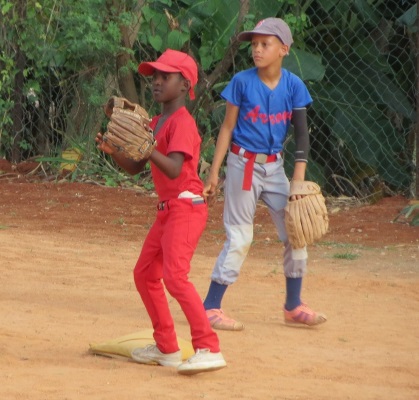
The categories of children’s baseball in Cuba are rescued by parents of the “little ballplayers” because, it seems, the National Institute of Sports, Physical Education and Recreation (INDER) has no resources to provide the necessary sports equipment.
The categories of 7-8 years and 9-10 years are supported by the parents of the child athletes, as long as INDeR doesn’t provide the minimum materials, such as: gloves, special balls, bats, among others. It doesn’t allow the development of Cuban baseball.
Rolando Suarez, a 45-year-old coach, spoke of the ingenuity required to get a result in competitions. “Thanks to the parents we can train the children, because INDER gives each school coach only one or two gloves, one bat and two Kenko balls, which last only four months. During the remaining 6 or 7 months, I have to ask the parents for help to continue to coach.” continue reading
According to some instructors, these categories have special rules, one of which regulates to the play to a solid rubber ball (known as Kenko), a different material from the balls for the older ages, which use synthetic materials. The Kenko balls cost about 300 pesos each.
Suarez also explained, “I have an enrollment of 20 students in the 7-8 category, and in 9-10 I have 19 students. What INDER gives me isn’t enough!”
Another children’s coach who asked to remain anonymous, explained that the lack of resources also hits the parents’ budgets, “Several students have left the sport because it’s very expensive.”
Michel Garcia, a 37-year-old father, commented, “My son has his sports uniform, glove and a bad thanks to me but not everyone can spend more than 2,500 pesos for these expenses.”
According to a methodologist in the capital municipality of 10 de Octubre, who is in charge of educating coaches and supervising the training with the purpose of ensuring good preparation, and who asked to remain anonymous, commented that everything the Municipal Sports Authorities delivered to the coaches, is usurped by them.
“They sell gloves, balls and bats to the parents of the students. It is a sport where the majority of the parents have money, and demand creates the market,” he said.
This methodologist continued, explaining that many parents have complained to the Municipal Sports Authority in 10 de Octubre, about the conditions for the children playing baseball, a sport supposedly prioritized in Cuba.
So far, the conditions don’t seem to change. Coaches like Racel Perez, 28, consider another option, “I have to coach a different sport,” he laments.
From Anddy’s blog, previously published in Cubanet
23 March 2015
Dialogue or Monologue / Fernando Damaso
Our authorities have always been preoccupied with extolling the originality of anything coming out of Cuba. Our freedoms, socialism, democracy, human rights, political and economic system, electoral process, governmental bodies, political and grass-roots organizations, and everything else are unique and unlike anything comparable in the rest of the world. Furthermore, it is argued — with scant modesty — that they are the best and most perfect. What is striking is that this unhealthy addiction to being different applies only to the outside world. Differences within the country, among Cubans themselves, are not acceptable.
Dictating how things are to be done has become a daily and unhealthy practice over the years, especially when done by those have held and still hold absolute power. We have seen the imposition of a political, economic and social system, one-party rule, a socialist Constitution, basic laws, organizations and associations, educational, cultural, and moral standards, and many other things that should have involved consultation with citizens and should have been freely approved or rejected by them. continue reading
The disastrous results are plain to see. The country has regressed as never before in its history, including even during the most critical times.
Even today, in spite of declarations to the contrary, we continue seeing efforts to dictate.
Wouldn’t it be more intelligent to have a dialogue and look for consensus?
When I suggest dialogue, I do not mean conversations between people who think alike, which is what we have now, but between those with differing opinions. The results would undoubtedly be better. An exchange of views in a respectful and constructive climate might yield wonderful solutions. Why not try it? We stand to lose nothing more than we have already lost from the now obsolete monologue.
1 April 2015
Committees for the Defense of the Revolution and Citizen Participation / Cubanet, Martha Beatriz Roque

 Cubanet, Martha Beatriz Roque, Havana, 2 April 2015 — Whenever the topic of democracy and the Cuban regime comes up, the top leaders say that this is the most democratic country in the world. The latest version is that “‘democracy’ is subject to interpretation, and every country understands it in its own way.”
Cubanet, Martha Beatriz Roque, Havana, 2 April 2015 — Whenever the topic of democracy and the Cuban regime comes up, the top leaders say that this is the most democratic country in the world. The latest version is that “‘democracy’ is subject to interpretation, and every country understands it in its own way.”
This also occurs with citizen participation, which assumes a receptivity on the part of government officials to listen to what the citizens want to communicate to them, to help improve the politics and management of public concerns. It means that all who want to get involved in matters that affect the people will be heard, and they will be allowed to contribute their points of view, concerns and possible solutions.
Even so, although the regime talks a good game, the totalitarian power looms over the practically null power of the people, which makes citizen involvement quite difficult in Cuba, thus preventing the growth of participatory democracy. continue reading
Today, in the modern democratic society, another way in which citizen participation takes place is through Non-Governmental Organizations (NGOs) which, in most cases, push for certain social and humanitarian causes.
The regime in general pays very little attention to the participation of the citizens, however through “opinion surveys,” which it conducts constantly, it knows perfectly well what they are thinking, but there is no interactivity in the process.
And the issue, according to the Constitution of the Republic in its Article 62, is that none of the recognized liberties of the citizens can be exercised against what is established in the Constitution and the laws of the land, nor against the existence and ends of the Socialist State, nor against the decision of the Cuban people to construct socialism and communism.
It is for this reason that to maintain a majority control of citizen participation, there are those inappropriately named NGOs – the ones which the regime wants to be recognized as members of the civil society, and which in the official context are called “mass organizations.” Notable among these are the Committees for the Defense of the Revolution (CDRs).
This organization was founded by Fidel Castro on September 28, 1960, in a public ceremony in front of what is today the Museum of the Revolution, with the objective of carrying out acts of collective vigilance against foreign meddling and acts of destabilization committed against the Cuban political system.
The CDRs have a structure controlled by the State which, besides their social labors, performs the principal mission of monitoring and controlling the public and private lives of individuals and all the neighbors, on a very close level.

Despite their being considered an NGO, it can be publicly seen that the CDR supplies come from the government, even though they collect a monthly per-member fee of 25 cents in national currency for financing their operations. For example, the cars driven by the nomenklatura of the CDR—at all levels—bear the organization’s logo and a State license plate. They have a considerable number of buildings to maintain the provincial, municipal and zone structures. If only one of these organizational levels were eliminated, housing could be provided to some of the families in the country who have no roof over their heads.
One of the official arguments for considering the CDRs as promoters of citizen participation in the common good, is its intervention in elections. According to Article 68 of Law # 72 (the Electoral Law), the CDR includes the Candidacy Commission, along with other supposed NGOs, such as the Cuban Workers Center (which the CDR presides over), the Federation of Cuban Women, the National Association of Small Farmers, the Federation of Secondary Students, and the Federation of University Students.
The CDRs are in charge of keeping current the Registry Book of Addresses, which is the official roll in which all citizens must register when they move from one location to another. In most cases the official in charge of the registry is the president or the person responsible for neighborhood monitoring. It is difficult to comprehend that an official document that serves, among other things, to keep lists of voters, is in the hands of a non-governmental agency. Even less understandable is that the Law stipulates that those responsible for these registries must produce, within fifteen days following the publication of the call to vote in the Official Gazette of the Republic, a list of citizens who reside in their areas of purview who have, in their judgment, the right to vote, according to established law.
In addition, the CDRs are the font of primary information for the “verification” done of individuals by their workplaces, the police, State Security, etc. – which implies, by the same token, an obligation to the state, and an official linkage.
Among other duties they perform: blood donation, street sweeping on designated dates, collection of raw materials, participation in repudiation rallies against those who dissent from the regime, and the constant monitoring of the neighbors in their block. In some coastal areas they support the fight and vigilance against possible drug importations via the seas that surround the Island. They have quotas to achieve in the mobilizing campaigns to recruit participants for the parades and demonstrations in the Plazas of the various provinces.
It wouldn’t be surprising to see a television program of official accounting, from the Interior Ministry, titled, “On the Trail of….,” in which they publicly show that their main source of information are the CDRs.

It is possible that they also consider it citizen participation to nominate those persons, during neighborhood meetings, who should be sold television sets or be assigned telephones. They have been so involved in State matters that, even during the Mariel Boatlift, they were ordered to give away the houses that were left vacant.
The CDRs violate human rights, because they have been involved in “acts of repudiation,” which have included abuse, intimidation, and, on occasion, physical mistreatment, against those who have been deemed “counterrevolutionaries,” or enemies of the Revolution. Still today, in the minds of two of the generations that have lived through the dictatorship, memories persist of the events of Mariel, in which the CDRs actively participated, harassing entire families, physically and verbally mistreating them, simply because they wanted to emigrate.
Although throughout the entire existence of this organization, numerous reasons can be identified which support the contention that the CDR is indeed an “official” entity, one would have to particularly name the fact that its National Coordinators have been members of the Council of State in the eight legislatures conducted to date: Jorge Lezcano Pérez, Armando Acosta Cordero, Sixto Batista Santana, Juan Contino Aslán, and Juan José Rabilero Fonseca. They were all representing this “NGO” until 2013. By the same token they were all at some point members of the Central Committee of the Communist Party of Cuba.
This is the citizen participation of which the Castro dictatorship will boast, through its official spokespersons, at the Seventh Summit of the Americas.
Translated by Alicia Barraqué Ellison
Rosa María Payá announces the creation of the initiative “Cuba Decides” / 14ymedio
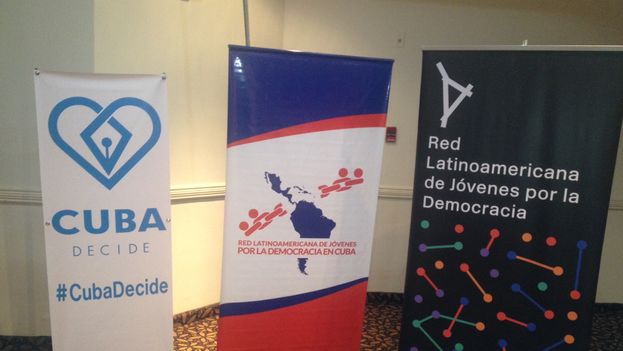
![]() 14ymedio, Havana, April 6 2015 – Rosa María Payá, daughter of the late Cuban activist Oswaldo Payá, has announced this Monday the creation of the citizen initiative Cuba Decide, or “Cuba Decides.” The goal of the project, presented during the Forum of Youth Movements in Panama, is for Cubans to pronounce themselves through a plebiscite regarding the changes they would like to implement on the Island.
14ymedio, Havana, April 6 2015 – Rosa María Payá, daughter of the late Cuban activist Oswaldo Payá, has announced this Monday the creation of the citizen initiative Cuba Decide, or “Cuba Decides.” The goal of the project, presented during the Forum of Youth Movements in Panama, is for Cubans to pronounce themselves through a plebiscite regarding the changes they would like to implement on the Island.
“We are conscious that only Cubans should define and decide on the changes that our society needs,” states the group’s website. “In order for citizens to be able to design, decide and construct their future, their rights should be guaranteed by the law and an atmosphere of trust and respect for all should also be achieved. That is what we proclaim and we work for a plebiscite that will consult the people in that matter. There will be no transition to democracy in Cuba if Cubans are excluded once again.” continue reading
The initiative advocates for the calling of “free, just, and plural” elections in an atmosphere in which the freedoms of expression, press, and assembly into political parties and plural social organizations are respected.
“No one should question that the changes desired by the Cuban people are those of freedom, reconciliation and full and guaranteed rights. Opposition within Cuba and abroad works and battles peacefully to achieve these goals. However, our greatest deficiency is that we have no voice, nor the democratic tools needed to express ourselves while the government and some others around the world pretend to speak on behalf of our people,” reads Cuba Decide’s website.
The project presented by Rosa María Payá accuses the Cuban government of being responsible for repression and violence against those with alternative opinions and initiatives and blames the absence of an environment that respects the law and self-determination for the “social and economic failures, as well as the constant and massive exodus of citizens” from the Island.
The proposal seeks to give continuity to the Varela Project, promoted in 1998 by Oswaldo Payá with the aim of enlarging individual liberties in Cuba. Payá achieved the collection of the more than 10,000 signatures required by the Cuban Constitution for the proposal of legislative amendments. The National Assemble, however, rejected the proposal as inconsistent with the law.
Translated by Fernando Fornaris
When I got to Varadero* / Cubanet, Luis Cino Alvarez
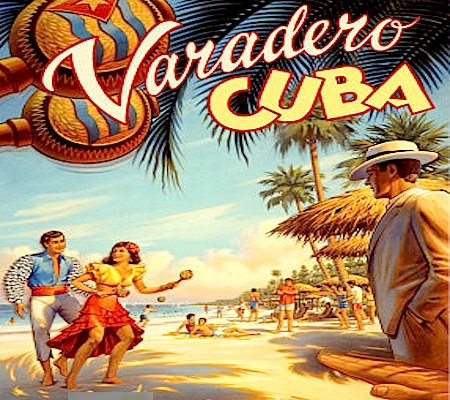
 Cubanet, Luis Cino Alvarez, Havana, 30 March 2015 — Despite the fact that on the three occasions I ever visited Varadero my experiences were not particularly pleasant, that beach – which today for the majority of Cubans is almost as inaccessible as Waikiki – occupies a special place in my nostalgia.
Cubanet, Luis Cino Alvarez, Havana, 30 March 2015 — Despite the fact that on the three occasions I ever visited Varadero my experiences were not particularly pleasant, that beach – which today for the majority of Cubans is almost as inaccessible as Waikiki – occupies a special place in my nostalgia.
The first time I was at Varadero was in November, 1970, during the Festival of the Song. I was 14 years old. I went with two friends who were more or less my age, fleeing our homes and playing hooky from school, chasing after the Spanish pop groups Los Bravos (without Mike Kennedy), Los Angeles and Los Mustangs. They weren’t really our top favorites (at the time when we had still not resigned ourselves to the break-up of The Beatles, we were crazy for Led Zeppelin, Chicago, Creedence Clearwater Revival and Santana) but in the ideologically pure Cuba of the period, one could not aspire to something greater. Plus, we wanted the performances by those Spanish groups – despite how abysmally bad they sounded – to be our own version of Woodstock.
But the police rained on our parade. We ended up in a police station that stank of shit and where from a poster on the wall the Commander in Chief [Fidel] stared at us, scowling. I don’t know if his angry expression was due to our insolent ideological diversionism, or because the 10 Million Ton Harvest failed, and he had to devote himself to turning the setback into a victory at the expense of Nixon, whose name at that time was invariably spelled with a swastika in the newspaper, Granma. continue reading
By throwing us in the pokey, they almost did us a favor, because outside it was as cold as Kamchatka. The bad part was when the officers started to talk about cutting our hair, and we heard one say, “These guys are gonna get scalped.” Luckily these were no more than idle threats. They let us go at the Cárdenas terminal with the warning, “Get the fuck out here right now, Punks.”
My second visit to Varadero was in the summer of 1979. I went with my wife. We arrived unexpectedly, with a few clothes in a backpack. At that time, Varadero was not only for foreign tourists. Even so, we had to spend the night between the “Park of the Thousand Box Offices” and the sands of the beach. When the police threw us out of the park, we went to the shore. We drank Coronilla brandy, made love among the casuarina trees, and later, despite the mosquitoes, fell asleep in the sand. We were awakened by the border patrol, with dogs and bayonets, who told us that we could not spend the night on the coast. We then returned to the park, sans police. At dawn we returned to the beach and, when the sun was out, got into the water to wake ourselves up.
We were only able to obtain lodging (very reasonably priced) in a little wooden “hotel,” the Miramar. As old and decrepit as it was, I suppose it no longer exists.
We had a great time: all day on the beach, and at night we would go dancing to the beat of The Bee Gees at the La Patana club. The only downside was the couple in the room next door. When they made love, they would screech as if being murdered. Their screams penetrated the wooden walls, as if inviting one to emulate them – or to switch partners, because with all that racket, it was as if we were all entangled together in the same bed. When we finally caught sight of them one morning at the hotel entrance, these sexual athletes turned out to be a little chubby peroxide blonde, and a skinny guy with a mustache, nearsighted glasses and the look of an official from the Central Planning Council.
The third and last time that I was in Varadero was in 1986, during an excursion on a “day for outstanding employees” that my wife won at the State company where she worked. We went with the oldest of our sons, who had not yet turned three years old. All went well, until we ran out of drinking water and, while searching for a faucet where we could fill several bottles, we lost the boy’s left shoe. This was a real tragedy because that pair of Chinese Gold Cup shoes had cost us a fortune at the Yumurí store.
Since that time, I have not returned to Varadero – a place at first reserved for foreign tourists and the privileged elite, and now on the way to becoming a global resort, without an identity, depersonalized, only for the rich. Or rather, what we Cubans in our indigence understand to be “rich.” I don’t want to feel discriminated against, humiliated, or to be expelled in a worse way than I was back in 1970 – keeping in mind that, in the logic of the security personnel who watch me, a dissident would be much more troublesome than a kid disguised as a hippie.
Varadero, in my mind, continues to be associated, in a certain way and in spite of everything, with happiness. I don’t want to ruin that image.
The first time I was at Varadero was in November, 1970, during the Festival of the Song. I was 14 years old. I went with two friends who were more or less my age, fleeing our homes and playing hooky from school, chasing after the Spanish pop groups Los Bravos (without Mike Kennedy), Los Angeles and Los Mustangs. They weren’t really our top favorites (at the time when we had still not resigned ourselves to the break-up of The Beatles, we were crazy for Led Zeppelin, Chicago, Creedence Clearwater Revival and Santana) but in the ideologically pure Cuba of the period, one could not aspire to something greater. Plus, we wanted the performances by those Spanish groups – despite how abysmally bad they sounded – to be our own version of Woodstock. .
But the police rained on our parade. We ended up in a police station that stank of shit and where from a poster on the wall the Commander in Chief [Fidel] stared at us, scowling. I don’t know if his angry expression was due to our insolent ideological diversionism, or because the 10 Million Ton Harvest failed, and he had to devote himself to turning the setback into a victory at the expense of Nixon, whose name at that time was invariably spelled with a swastika in the newspaper, Granma.
By throwing us in the pokey, they almost did us a favor, because outside it was as cold as Kamchatka. The bad part was when the officers started to talk about cutting our hair, and we heard one say, “These guys are going all the way.” Luckily these were no more than idle threats. They let us go at the Cárdenas terminal with the warning, “Get the fuck out here right now, Punks.”
My second visit to Varadero was in the summer of 1979. I went with my wife. We arrived unexpectedly, with a few clothes in a backpack. At that time, Varadero was not only for foreign tourists. Even so, we had to spend the night between the “Park of the Thousand Box Offices” and the sands of the beach. When the police threw us out of the park, we went to the shore. We drank Coronilla brandy, made love among the casuarina trees, and later, despite the mosquitoes, fell asleep in the sand. We were awakened by the border patrol, with dogs and bayonets, who told us that we could not spend the night on the coast. We then returned to the park, sans police. At dawn we returned to the beach and, when the sun was out, got into the water to wake ourselves up.
We were only able to obtain lodging (very reasonably priced) in a little wooden “hotel,” the Miramar. As old and decrepit as it was, I suppose it no longer exists.
We had a great time: all day on the beach, and at night we would go dancing to the beat of The Bee Gees at the La Patana club. The only downside was the couple in the room next door. When they made love, they would screech as if being murdered. Their screams penetrated the wooden walls, as if inviting one to emulate them – or to switch partners, because with all that racket, it was as if we were all entangled together in the same bed. When we finally caught sight of them one morning at the hotel entrance, these sexual athletes turned out to be a little chubby peroxide blonde, and a skinny guy with a mustache, nearsighted glasses and the look of an official from the Central Planning Council.
The third and last time that I was in Varadero was in 1986, during an excursion on a “day for outstanding employees” that my wife won at the State company where she worked. We went with the oldest of our sons, who had not yet turned three years old. All went well, until we ran out of drinking water and, while searching for a faucet where we could fill several bottles, we lost the boy’s left shoe. This was a real tragedy because that pair of Chinese Gold Cup shoes had cost us a fortune at the Yumurí store.
Since that time, I have not returned to Varadero – a place at first reserved for foreign tourists and the privileged elite, and now on the way to becoming a global resort, without an identity, depersonalized, only for the rich. Or rather, what we Cubans in our indigence understand to be “rich.” I don’t want to feel discriminated against, humiliated, or to be expelled in a worse way than I was back in 1970 – keeping in mind that, in the logic of the security personnel who watch me, a dissident would be much more troublesome than a kid disguised as a hippie.
Varadero, in my mind, continues to be associated, in a certain way and in spite of everything, with happiness. I don’t want to ruin that image.
Author’s Email Address: luicino2012@gmail.com
Translator’s Notes:
*The title of this piece is taken from a line in the song, Conocí la paz, sung by legendary Cuban singer, Beny Moré. Varadero is a beach resort town in the province of Matanzas, Cuba.
Translated by Alicia Barraqué Ellison
Rosa Maria Paya Detained at Airport in Panama
Translations, from top to bottom:
They searched everything I had in my bag, even my underwear. At one point they took my personal agenda with all my notes.
Now they have put me in detention, saying they are checking my documents I am someplace in the Tocumen airport.
“You will be deported to Cuba if you cause any disturbance, carry a placard… Go to your own country to cause disturbances,” the agent threatened me.
I am being detained by Panama National Security at the door of the airplane.
Three members of Cuban civil society questioned on arrival in Panama / 14ymedio
![]() 14ymedio, Havana, 4 April 2015 – When they got off the plane at the airport in Panama Saturday, immigration officials confiscated the passports of six young Latin Americans, including three Cubans who arrived from Costa Rica, where they had been participated in activities organized by the Liberation Movement Party and the Latin American Youth Network for Democracy.
14ymedio, Havana, 4 April 2015 – When they got off the plane at the airport in Panama Saturday, immigration officials confiscated the passports of six young Latin Americans, including three Cubans who arrived from Costa Rica, where they had been participated in activities organized by the Liberation Movement Party and the Latin American Youth Network for Democracy.
The three Cubans are part of the first group of independent civil society arriving in Panama to participate in forums parallel to the Summit of the Americas. They are Eliezer Ávila (Somos+ / We Are More), Kirenia Yalit (Roundtable of Cuban Youth, MDJC) and Yasser Rojas (Cubalex).
“It was very clear that officials had a completely erroneous information about the purposes of our trip,” Eliezer Avila told 14ymedio. “Someone had communicated to them that we were coming to ‘sabotage the activities of the Summit,’ they explained to us during a two-hour interrogation in a closed room.” continue reading
After checking the data of the six young people and crosschecking them with the list of those invited to the forum, they concluded that everything was in order. “They apologized to us for the inconvenience and pointed out that all they want is to ensure that there no problems during the summit,” added the leader of Somos+.
According to Ávila, “This experience should serve those who come after us, because this incident indicates that the long arm of the Plaza of the Revolution came to Panama to undermine the terrain at every step of the way for those with a voice that is not governed the script of the Communist Party.”
Dissident leaders carry a united message to the Americas Summit in Panama / 14ymedio, EFE
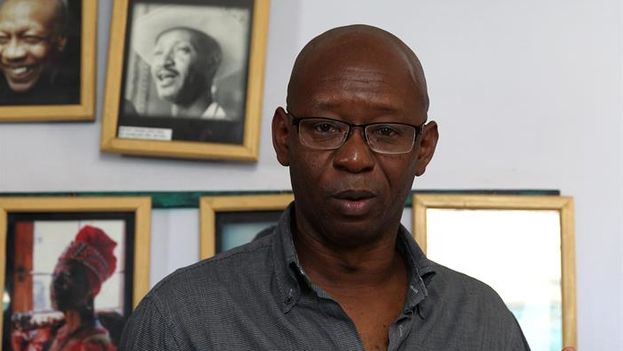
![]() 14ymedio/EFE, Havana, 3 April 2015 –Several leaders of the Cuban opposition and independent civil society made public Friday a document title “A United Message to the Seventh Summit of the Americas” under the slogan “Yo soy Cuba” (I am Cuba). In the text they point out that the “ the full insertion of the Cuban government in the inter-American system is incompatible with the principles of the Inter-American Democratic Charter.”
14ymedio/EFE, Havana, 3 April 2015 –Several leaders of the Cuban opposition and independent civil society made public Friday a document title “A United Message to the Seventh Summit of the Americas” under the slogan “Yo soy Cuba” (I am Cuba). In the text they point out that the “ the full insertion of the Cuban government in the inter-American system is incompatible with the principles of the Inter-American Democratic Charter.”
The document is signed by Felix Navarro, Pedro Luis Boitel Party for Democracy; Manuel Cuesta Morua, Progressive Arc; Guillermo Fariñas, United Antitotalitarian Front; Iván Hernández Carrillo, Trade Unionist; José Daniel Ferrer, the Patriotic Union of Cuba; Carmelo Bermúdez Rosabal, Progressive Arc; Juan Antonio Madrazo, Committee for Racial Integration, and groups such as Citizens for Democracy, Municipalities in Opposition, among others. continue reading
The signers enumerated at least seven points that demonstrate the undemocratic nature of the Cuban government. Among them are the repression, the existence and political prisoners and prisoners of conscience, the harassment of entrepreneurs, the unwillingness to ratify the United Nations Covenants on Civil, Political, Economic, Social and Cultural Rights, the existence of a single-party regime that does not allow the alternation of power, the inability of citizen to choose among different political alternatives, and the prohibition of multi-party representative democracy.
Their purpose is that the Summit of Americas, on April 10-11, is an “opportunity” to recognize “the legitimacy of the independent Cuban civil society within the island and in the diaspora as a valid interlocutor of the Cuban people,” opponent Manuel Cuesta Morúa, leader of the Cuban Progressive Arc Party said today.
Cuesta Morúa explained that the Ladies in White are not currently included because the project promoters have not been able to talk to the leader of the women’s group, Berta Soler, because she is outside the country, although they have not ruled out that she will join with them in Panama, during the summit.
In any case, there are more than dozen organizations behind this project representing what they call “independent civil society” within Cuba and in exile, groups that “cover the entire political spectrum,” said Cuesta Morúa.
He will be one of those charged with carrying this united proposal to the social forums of the Summit of the Americas, a meeting the Cuban government will attend for the first time and that will be the site of the expected meeting between the presidents of Cuba, Raul Castro, and of the United States, Barack Obama, the first after their diplomatic thaw.
Besides Cuesta Morua and Fariñas, other dissidents who will attend in Panama include Berta Soler, the leader of the Ladies in White; Elizardo Sanchez of the Cuban Commission for Human Rights and National Reconciliation (CCDHRN); and representatives of UNPACU, although not its leader José Daniel Ferrer.
Ferrer, who is not allowed to leave the island because he was one of the political prisoners of the “Group of 75” released on parole in 2010, is one of the charged with organizing a social forum parallel to the summit in Panama within the island.
On April 10 two civil society forums will be held in Cuba, one in Santiago de Cuba and another in Havana, to present the “united message” within the island as well, and to gather people’s proposals with regards to what to work on going forward.
“It will be about a coming together of those of us who feel ourselves to be members of the democratic open forum to share views about the need for changes in human rights, freedoms and the election system, given that Cuba is not the only country on the continent with a single party,” Ferrer explained to EFE.
In the joint statement, these groups demand that Cuba’s participation in the summit for the first time serve the ends of the final insertion of the island into the inter-American system following the principles of the Inter-American Democratic Charter.
In this sense, they denounce the repression of those exercising the rights of expression, assembly and association in Cuba; the existence of political prisoners; the prohibition of a representative and multiparty democracy; the refusal to consult the people about their future; and the unwillingness to ratify the UN Covenants on civil, political, economic, social and cultural rights.
The social forums to be held in parallel with the summit in Panama, will also be attended by more than one hundred representatives of Cuban civil society and government organizations on the island.
The text prepared by these activists expresses different views and the “rich diversity, in the Agreement for Democracy, in the Points of Cuban Consensus, in the proposals of the Forum for Rights and Freedoms, and the Open Forum Four Points of Consensus.”
The document also reflects the willingness of “most of our alternatives” to “working together, in order to return Cuba as a free and sovereign nation to a hemispheric environment where democracy and institutional respect for human rights and fundamental freedoms prevail.”
A United Message to the Seventh Summit of the Americas / Cuban Opposition, Civil Society and Democratic Social Actors
Cuban Pro-democracy Organizations on the Island and in Exile bring:
A UNITED MESSAGE TO THE SEVENTH SUMMIT OF THE AMERICAS
Cuban Opposition, Civil Society and Democratic Social Actors
The Summits of the Americas must be the place for participation and representation of all the democracies in the Americas. Of their States and of their free citizens. All this passes through the increasing incorporation of civil society and social actors in the process of the Summits, such that the topics of discussion acquire real significance and it is required of governments that they represent their people.
Here we present: In the roles of the Cuban opposition, civil society and the democratic social actors that we have assumed, after a long struggle of establishment and strengthening, principles of agreement expressed from a rich diversity, in the Agreement for Democracy, in the Points of Cuban Consensus, in the proposals of the Forum for Rights and Freedoms, and the Open Forum Four Points of Consensus.
Our shared mission is the defense and promotion of all democratic principles, fundamental freedoms and human rights, that comprise the cultural, historical and political base in this hemisphere, thanks to this rich diversity. continue reading
It is clear that a strong civil society is only possible where the independence of citizens is recognized and their rights and fundamental freedoms are respected. The Seventh Summit of the Americas is the opportunity for the Western Hemisphere to recognize the legitimacy of independent Cuban civil society within the lsland and the Diaspora as a valid interlocutor of the Cuban people.
It is also the scenario to make clear that the full insertion of the Cuban government in the inter-American system is incompatible with the principles of the Inter-American Democratic Charter.
This is because of:
- the repression in Cuba of those who exercise the rights of expression, assembly, association and demonstration,
- the existence of political prisoners and prisoners of conscience,
- the constant harassment of the nascent entrepreneurial sector,
- the unwillingness to ratify the United Nations Covenants on Civil and Political Rights; and on Economic, Social and Cultural Rights, signed by the government but not ratified by the National Assembly of People’s Power,
- the existence of a single party regime that does not allow the rotation of power,
- the refusal to consult the Cuban people about their future and the inability of citizens to choose between political alternatives, and
- the prohibition of multi-party representative democracy.
None of the goals of this Summit, which as opposition and civil society we support, may be achieved while Cuba denies the human rights, understood in their entirety, of the Cuban people.
“I am Cuba” is our motto of identity, with which most of our alternatives are committed to working together, in order to return Cuba as a free and sovereign nation to a hemispheric environment where democracy and institutional respect for human rights and fundamental freedoms prevail.
35th Anniversary of the Mariel Boatlift: A Photo Essay / 14ymedio
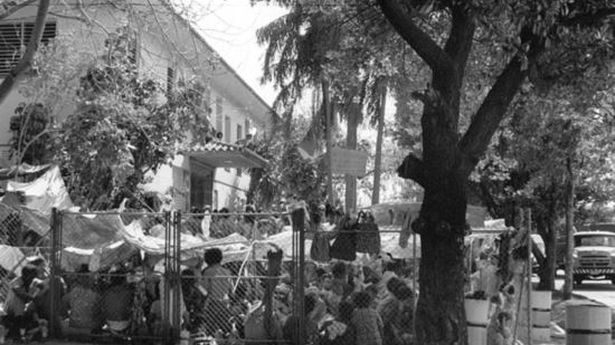
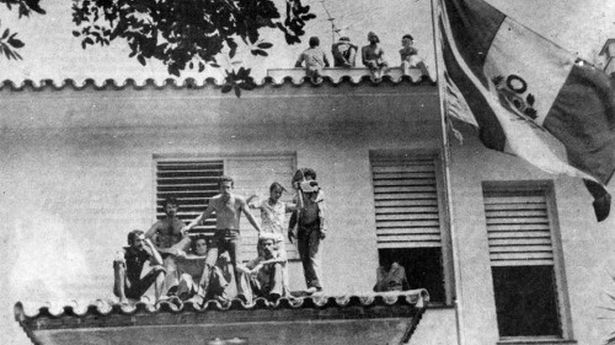
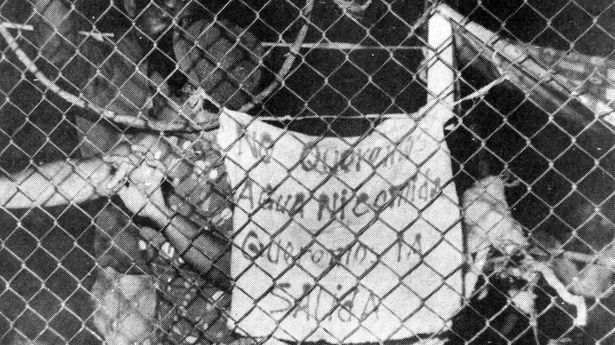
continue reading
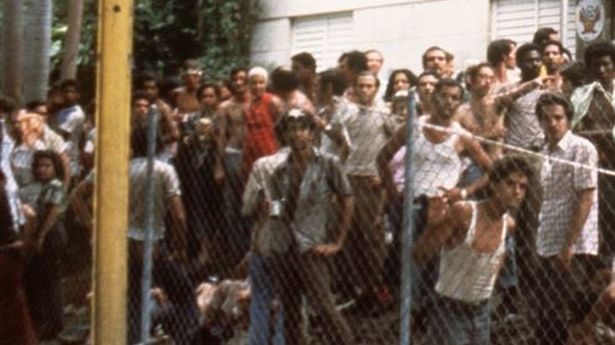
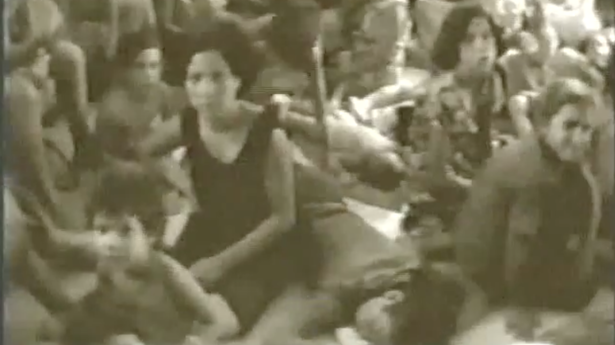
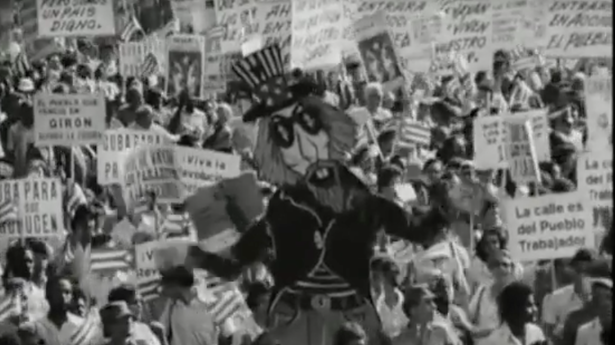
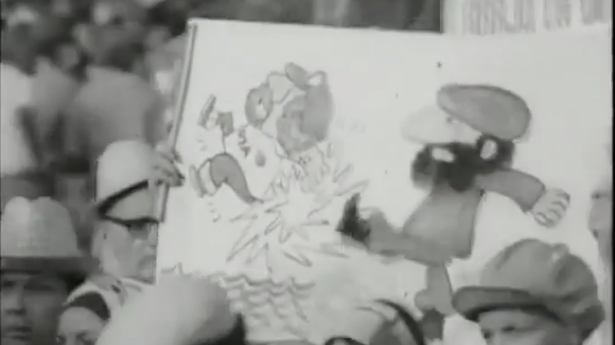
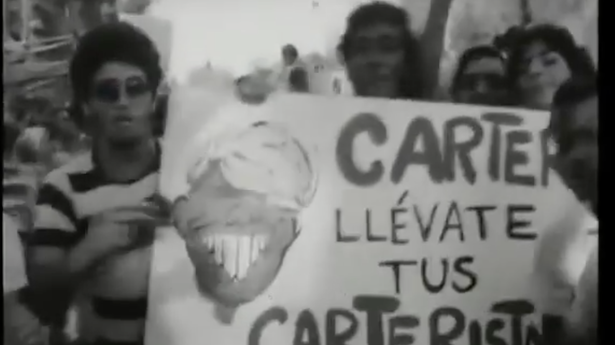
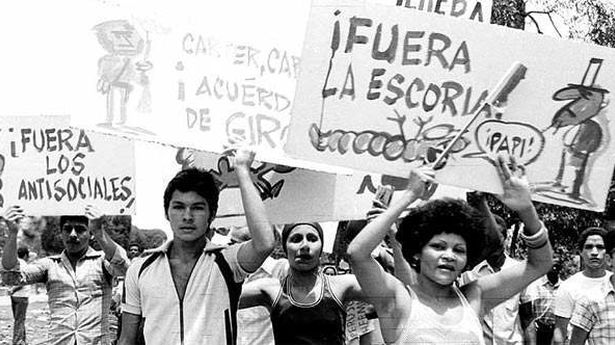
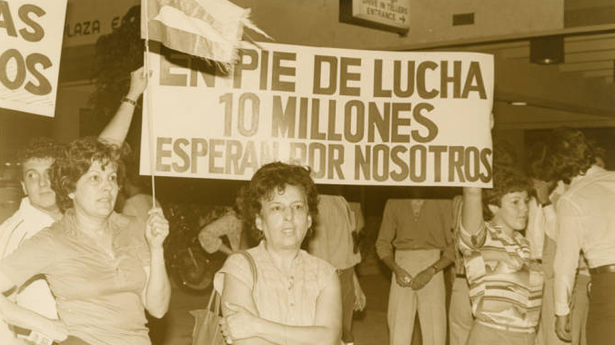
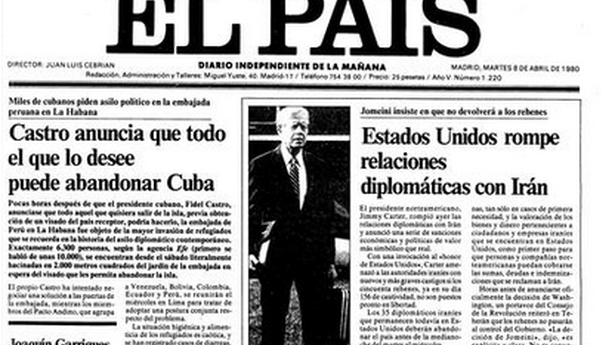

Airbnb offers over 1,000 private accommodations in Cuba / 14ymedio
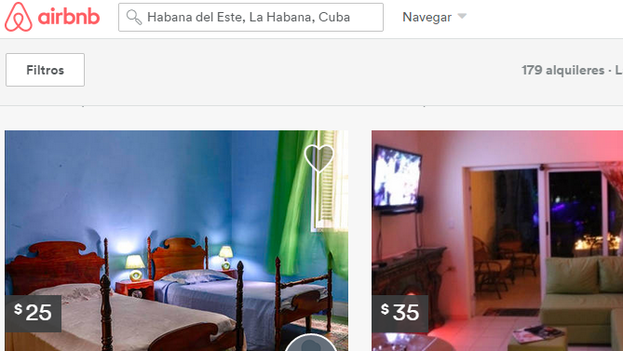
![]() 14ymedio, Havana, 2 April 2015 – Starting this Thursday, foreign tourists will be able to rent private rooms in Cuba through the service Airbnb, which directly connects homeowners and travelers all over the world.
14ymedio, Havana, 2 April 2015 – Starting this Thursday, foreign tourists will be able to rent private rooms in Cuba through the service Airbnb, which directly connects homeowners and travelers all over the world.
Airbnb’s site already offers more than 1,000 properties on the Island, mostly in Havana, although also in other localities such as Morón, Camagüey, Santa Clara and Cienfuegos.
More than half of the rooms are in the capital, especially in neighborhoods such as Vedado and the Malecon. The prices for a room in a private apartment in Havana start at 23 dollars a day and go as high as $370 for an entire apartment that sleeps nine. continue reading
Offerings in other cities are much more modest and the prices are below the average for Havana. In Pinar del Rio province, for example, it is possible to reserve a room in Viñales starting at $12 to a maximum of $52 for a more luxurious accommodation.
However, there are several users offering a large number of rooms in different parts of the country. An intermediary calling himself Michael, for example, publishes 232 lodging ads in Varadero, Pinar del Rio, Cienfuegos and Soroa, among other places.
Tourism, with revenues of some 2.5 billion dollars a year, is the third largest source of foreign exchange for Cuba, after the sale of medical services (Cuban doctors working abroad) and family remittances. As of the end of January the sector had grown by 16% this year compared to last, according to official data. In the first month of the year the Island received 371,160 foreign visitors, 51,097 more than last year.
After the White House eased the rules for travel to Cuba in January, the number of travelers from the United States is expected to increase significantly, although they are still not allowed to travel as tourists.



